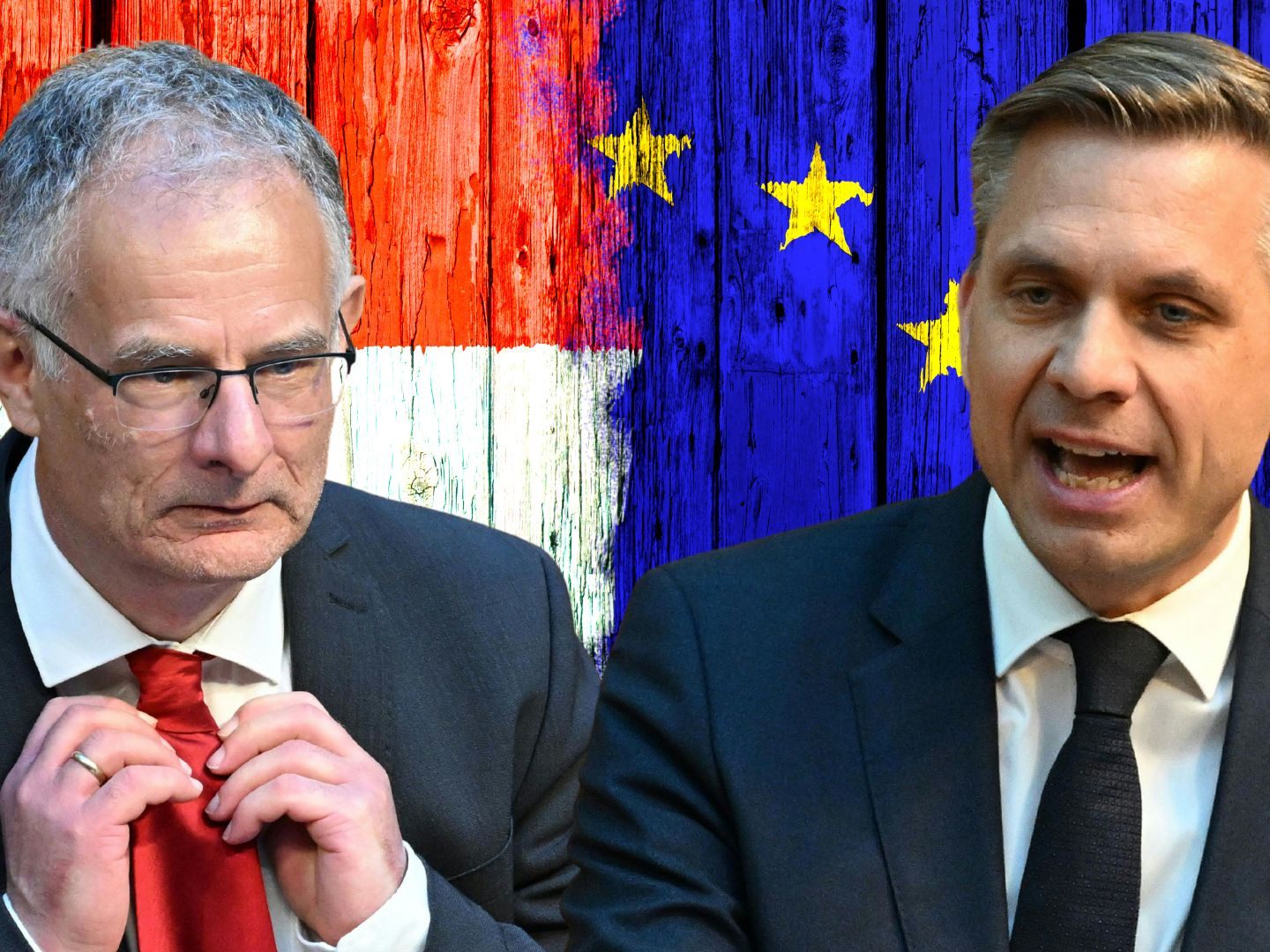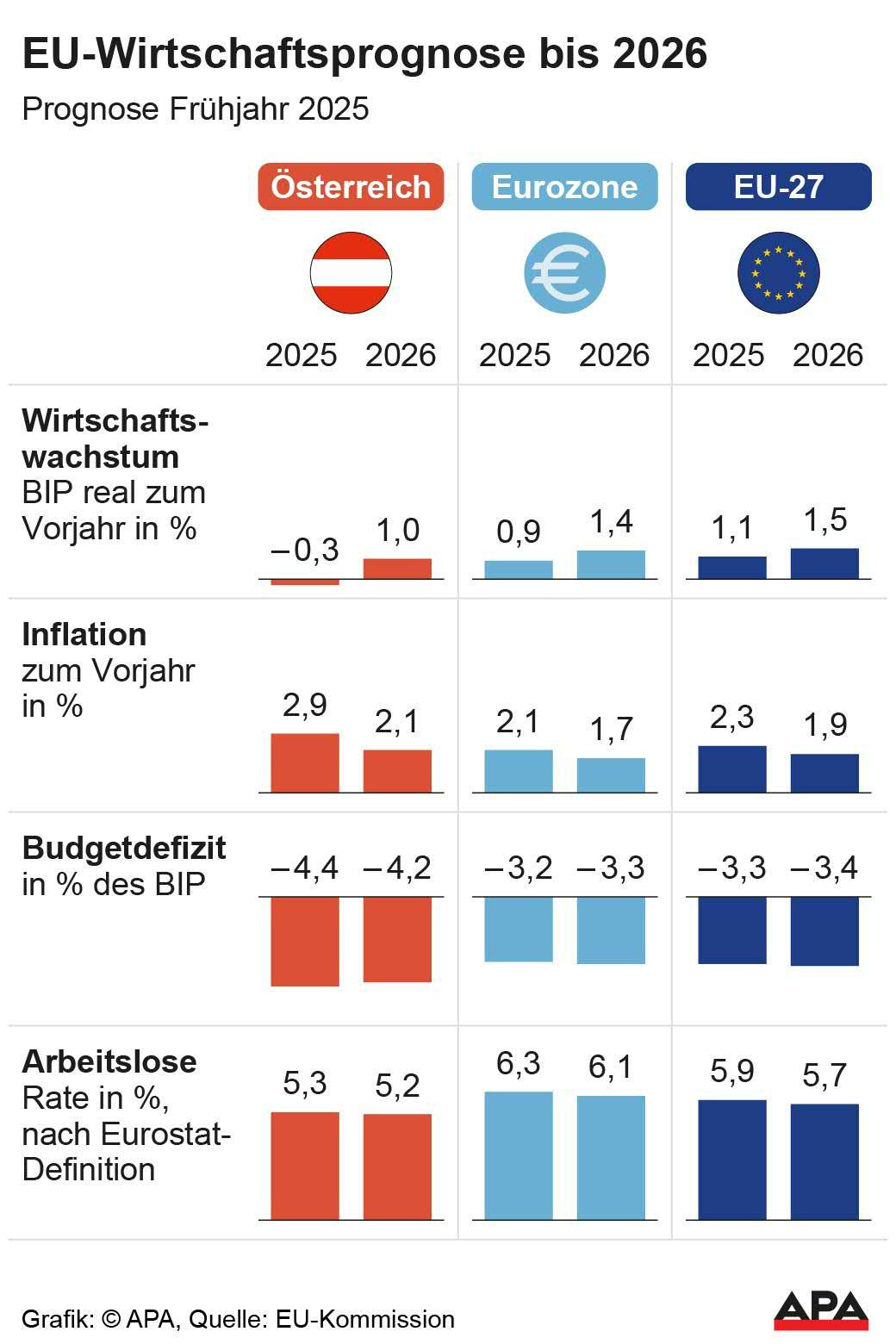EU Forecast Sees GDP Decline This Year Only in Austria

Inflation remains at 2.9 percent, above the EU average and the target value of 2 percent. The deficit will exceed the allowed value of 3.0 percent, reaching 4.4 percent of economic output.
Less Favorable Than in the Autumn Forecast
The latest EU forecast for Austria is significantly less favorable in all key aspects compared to the autumn forecast in November. At that time, the EU Commission had still predicted economic growth of 1.0 percent and an inflation rate of 2.1 percent. The deficit was expected to be 3.7 percent in 2025. At least the forecast for the unemployment rate remains stable at 5.3 percent.

EU Forecast: Austrian Economy Expected to Grow Again in 2026
Austria was already at the bottom of the EU in 2024 with an economic decline of 1.2 percent. The EU Commission writes that the triggers were declining investments and stagnant consumption. High energy prices and sharply rising production costs have affected the competitiveness of the industry. This will also burden exports.
At least the EU Commission expects economic growth of 1.0 percent for 2026. Inflation is also expected to practically return to the EU target value at 2.1 percent. Nevertheless, growth would remain below the average of EU countries and inflation above it. According to the forecast, Austria's deficit will also remain above the Maastricht limit and above the EU average of 3.4 percent, at 4.2 percent in 2026.
Entire Eurozone Grows Only Moderately According to EU Forecast
According to Reuters, the Eurozone will once again adopt a moderate growth pace this year according to the EU Commission's forecast, with Germany even stagnating. The Eurozone is expected to achieve a GDP increase of 0.9 percent, as predicted by the EU authority in its spring forecast on Monday. In the fall, it had estimated a growth of 1.3 percent. In 2024, the Eurozone had grown by 0.9 percent.
For the entire EU, Brussels predicts a GDP increase of 1.1 percent for the current year and 1.5 percent for 2026: "The EU economy is showing resilience despite high trade tensions and increasing global uncertainty," stated EU Economic Commissioner Valdis Dombrovskis, adding: "Supported by a robust labor market and rising wages, growth is expected to continue in 2025, albeit at a moderate pace."
Germany is expected not to emerge from the economic slump even in 2025 after two years of recession: The EU Commission predicts stagnation for this year, after having forecast a 0.7 percent increase in the fall. Only in 2026 will Europe's largest economy return to the growth zone. However, with 1.1 percent, the German GDP is not expected to grow as strongly as in the Eurozone, for which the EU Commission expects an increase of 1.4 percent.
EU Forecast: Eurozone Inflation Could Soon Be Under Control
Inflation in the Eurozone could decrease faster than previously forecasted and move towards the European Central Bank's two-percent target by 2025. The Commission expects the inflation rate to fall to 2.1 percent in 2025 and even drop below the two percent mark to 1.7 percent in 2026: "But we must not be complacent," warned Dombrovskis. The risks to the outlook remain tilted to the downside. "Therefore, the EU must take decisive action to strengthen its competitiveness."
(APA/Red)
This article has been automatically translated, read the original article here.





